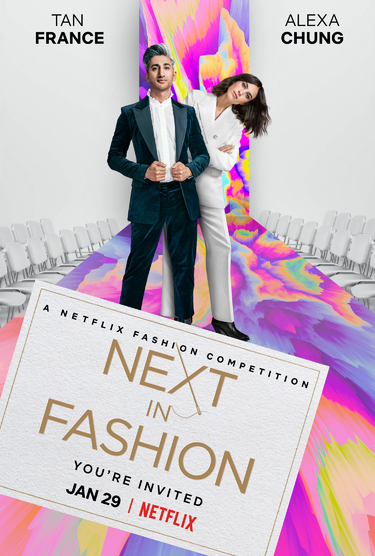By Andie Chilson | Reporter
“Next in Fashion” premiered on Netflix Jan. 29, and the fashion world has been abuzz ever since.
Many are calling the design competition show the next “Project Runway,” and it’s clear why – like “Project Runway,” the winner of “Next in Fashion” stands to win a whopping $250,000 cash prize and a major leg-up in the fashion industry.
Hosts Alexa Chung and Tan France of “Queer Eye” present a new design challenge each week, and the contestants are tasked with designing an ensemble (or for some weeks, two ensembles) that demonstrate their unique take on the theme of the challenge. This proved to be particularly difficult for some designers that couldn’t break from their personal ‘brand’ enough to meet the challenge, which often resulted in their elimination.
Because fashion, like any art form, is inherently subjective, the show brought in a different judge from the industry each week to provide a range of sartorial perspectives, usually a big name in the industry like Eva Chen, Monique Lhuillier and Prabal Gurung.
The show also brought an incredibly diverse cast, with contestants hailing from countries like China, Pakistan and Scotland, as well as a number of designers from the U.S. With this diversity of culture and background came a diversity of stylistic influence that was evident in everything the designers created. Contestants drew inspiration from their personal styles as well as their unique backgrounds to create garments that were both on-trend and deeply personal.
The ensembles’ styles ranged from sleek, edgy streetwear like the designs of Ashton Hirota, to the whimsical, Moschino-esque dresses created by Minju Kim. The distinct stylistic approach of each designer was put to the test during the first five episodes of the season when the designers were paired up, some of them with a designer they had never worked with before.
More than anything, the pairing system was a way to force designers to meld their unique style with another designer’s equally distinct vision. Sometimes, as in the case of designers Angel Chen and Minju Kim, the result was a striking ensemble that seamlessly exhibited two unique artistic influences; in other cases, like the unfortunate pairing of Hayley Scanlan and Julian Woodhouse, the designers refused to meet each other halfway, and the resulting ensemble was an awkward combination of two very distinct styles that didn’t mesh.
Where “Next in Fashion” breaks from the similar design competition show “Project Runway” is its lack of interpersonal drama among the contestants. Unlike the designers of “Project Runway,” the “Next in Fashion” designers are incredibly supportive and encouraging of one another. This doesn’t detract from the show’s ability to captivate audiences, but rather puts the focus on the design process instead of petty squabbles among contestants.
The show does a brilliant job of illustrating what it takes to construct garments that are both visually stunning and wearable. The competition forces designers to prove that they can be artistic and free-thinking as well as practical in their designs.
Whether you’re a novice to the fashion industry or a seasoned trend-spotter, “Next in Fashion” has a little something for everyone.






